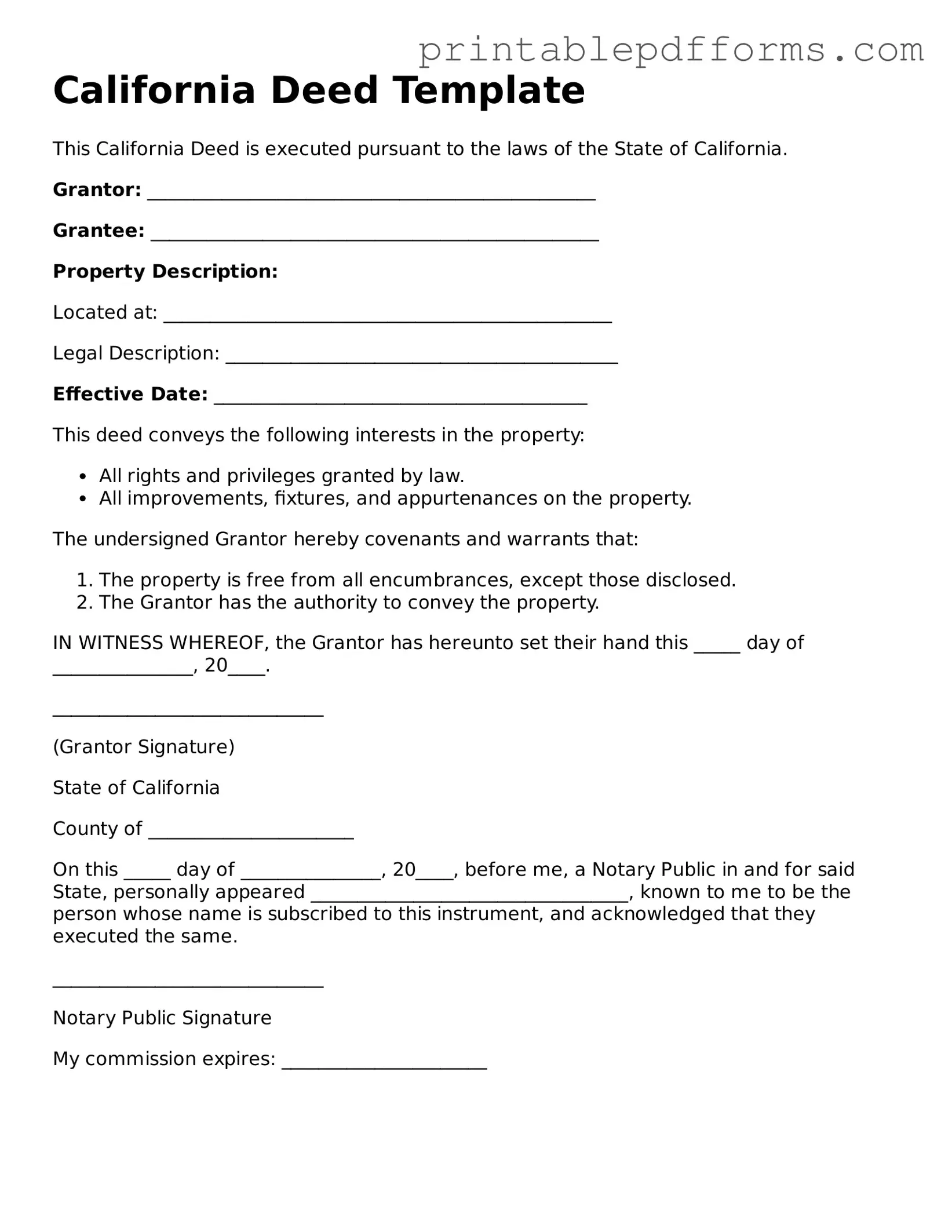California Deed Template
This California Deed is executed pursuant to the laws of the State of California.
Grantor: ________________________________________________
Grantee: ________________________________________________
Property Description:
Located at: ________________________________________________
Legal Description: __________________________________________
Effective Date: ________________________________________
This deed conveys the following interests in the property:
- All rights and privileges granted by law.
- All improvements, fixtures, and appurtenances on the property.
The undersigned Grantor hereby covenants and warrants that:
- The property is free from all encumbrances, except those disclosed.
- The Grantor has the authority to convey the property.
IN WITNESS WHEREOF, the Grantor has hereunto set their hand this _____ day of _______________, 20____.
_____________________________
(Grantor Signature)
State of California
County of ______________________
On this _____ day of _______________, 20____, before me, a Notary Public in and for said State, personally appeared __________________________________, known to me to be the person whose name is subscribed to this instrument, and acknowledged that they executed the same.
_____________________________
Notary Public Signature
My commission expires: ______________________
